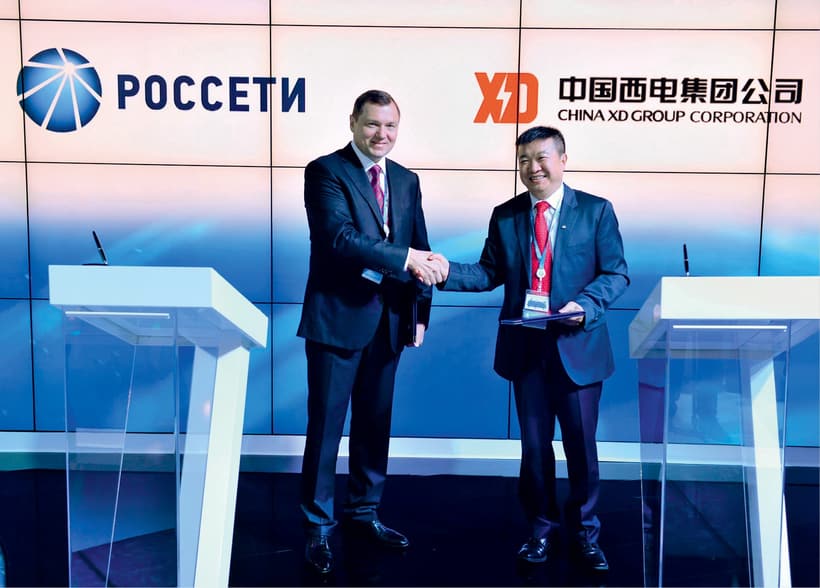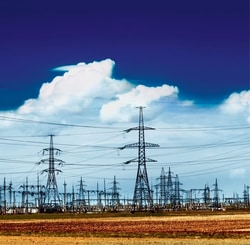Great, Silk, Common
The Eastern Pivot
The idea to build a new Silk Road was first put forward back in 2013 by China’s President Xi Jinping. The purpose of this huge geopolitical project is to revive the ancient trade route that traversed China, Mongolia, Russia, Belarus and Germany, forming a modern economic corridor stretching from Shanghai to Berlin.
It should be noted that initially the project was designed as a phenomenon capable of drastically changing the economic map of the world. What is more, many experts viewed it as the first step in the struggle for influence between East and West in Eurasia. Be that as it may, it does not take an expert to realize that the cities, ports and transportation hubs along this route are in for a period of explosive economic growth.
The plan includes building high-speed railways, highways, transportation networks for energy resources and fiber optic networks connecting Asia, Europe and Africa. The world’s largest economic corridor, with a production output of up to $21 trillion, will change the lives of 4.4 billion people.
However, it takes a lot of infrastructure – primarily power infrastructure – to bring this grand idea to life. All parties have an evident vested interest in building it: power generation would also spell new opportunities and a chance to receive additional income from excess capacities, while power transmission networks and, naturally, consumers stand to benefit from cheaper electricity.
The Great Asian Power Ring will become one of the most important elements of this new network infrastructure. This project involves building systemic links between the power systems of Russia, Mongolia, North and South Korea and Japan.
The total power exports resulting from the construction of a power bridge between Russia and South Korea are slated to reach 4 gigawatts, which accounts for nearly 5% of the installed capacity of all of the country’s power stations. This work is well underway: in summer 2015, during a session of the Russian-Korean Committee for cooperation on power and natural resources, the parties signed two strategic agreements on cooperation between Rosseti, Korean power corporation KEPCO, and Inter RAO. This project aims to promote electrical power exports from the Eastern Integrated Power System to the Korean peninsula as well as fostering scientific and technological cooperation
In essence, this would raise power integration in North-East Asia to a different level – potentially, the intersystem power exchange within the Great Asian Power Ring could reach more than 15 gigawatts. Overall, the integration of different power systems will make it possible to combine the maximum power system load (it has been proposed that in Russia alone the project will encompass regions located across five time zones from Altai to Vladivostok) and achieve greater effect by handling peak loads during different seasons (in winter in Russia and in summer in China).
It should be noted, however, that power engineers do not claim to be married to this pivot to the East. They are equally ready to cooperate with partners in Europe and the countries of Asia.
Development Impetus
The synergy effect that this cooperation will produce can hardly be overestimated: these integration projects will increase the load efficiency of generating capacities in neighboring power systems while minimizing capital investments into new power infrastructure. Equally, for Russia, these proposals are strategic in their nature: currently Russia’s Integrated Power Grid System has a large reserve capacity of nearly 20 gigawatts, with almost half of that in Siberia and the Far East. This means potential for cooperation with China while simultaneously developing Russia’s Eastern regions.
It is well known that President of the Russian Federation has signed a number of documents dealing with the construction of the Power of Siberia gas pipeline along the Eastern route. In the framework of this project Rosseti, a public joint-stock company, has been entrusted with establishing technological links between various gas transport infrastructure facilities and power grids, connecting in particular the production facilities at the Chayanda field, the KS-4 and KS-7 compressor stations servicing the gas pipeline, as well as the refining facilities in the Amur Region.
The development of the Chayanda and Kovykta fields will not only help to further gas exports but also foster the development of the petrochemical industry. These fields are unique in that they are rich in ethane and helium, two gases that hold a great deal of promise for the industry (up to 200 million tons of ethane, 73 million tons of propane, 44 million tons of butanes). Helium reserves in the Kovykta field are estimated at 2.3 billion cubic meters with 1.4 billion cubic meters in Chayanda.
As a result, new production facilities will emerge around these gas fields. Communities and towns will spring up and the load on Russian metal companies is likely to increase, creating a powerful impetus for social and economic development in a number of regions.
Mutual Interest
The total power exports resulting from the construction of a power bridge between Russia and South Korea are slated to reach 4 gigawatts, which accounts for nearly 5% of the installed capacity of all of the country’s power stations. This work is well underway: in summer 2015, during a session of the Russian-Korean Committee for cooperation on power and natural resources, the parties signed two strategic agreements on cooperation between Rosseti, Korean power corporation KEPCO, and Inter RAO. This project aims to promote electrical power exports from the Eastern Integrated Power System to the Korean peninsula as well as fostering scientific and technological cooperation.
There is another agreement in place with Japan’s Hitachi Ltd. to implement a project designed to ensure uninterrupted power supplies in Buryatia, Eastern Siberia, using renewable energy sources and new high capacity power storage technologies. NEDO, a foundation for the development of energy and industrial technologies, is planning to co-finance the project. The organization provides international financial support to innovative energy efficient projects. In the future, the project will be replicated in regions with similar conditions.
Another partnership agreement was signed with XD China to foster scientific and technological cooperation. The document proposes the localization of the manufacture of power equipment in Russia, as well as seeking alternative finance to renovate and build power facilities.
Some of the most promising projects include launching a 500 kW transit through the Tomsk Region. The project will be implemented as a part of the memorandum signed on 3 September 2015 in Beijing between Rosseti and the State Grid Corporation of China. A joint working group has already been put in place to tackle different ways of getting China’s financial institutions on board to fund the joint venture in Russia and launching projects to upgrade and build the country’s power grid complex facilities.
The construction of this 500 kW power line, which would link the Nizhnevartovskaya Thermal Power Plant, Sovetsko-Sosninskaya, Parabel and Tomskaya, enjoys a great deal of support from the Tomsk Region administration because the project will provide electricity for the Power of Siberia gas pipeline facilities (Altai), the Beloyarski timber processing combine, promising fields in the Tomsk Region and the facilities of the INO Tomsk innovation center.
The Middle Kingdom Awaits
the Power
A whole range of joint projects have been launched together with China. Since April 2012, Russia has been exporting electrical power to the People’s Republic along a 500 kW power transmission line connecting Amurskaya (on the state border) and Heihe, a 220 kW line between Blagoveshenskaya and Aihun and a 110 kW line between Blagoveshenskaya and Heihe. The long-term contract with the State Grid Corporation of China to supply 100 billion kWh of electrical power will run for 25 years. Once the Yerkovetskaya thermal power plant (Amur Region) becomes operational, exports to the People’s Republic could increase by 30-50 billion kWh per year. These numbers are significant and account for nearly 5% of Russia’s entire power output in 2014. However, 2,000 km of newly-built DC transmission lines are needed to reach this capacity.

These could be built by a special joint venture between Rosseti and China’s State Grid Corporation – both parties signed an agreement to incorporate the JV in May 2015 at a meeting between Russia’s President Vladimir Putin and China’s President Xi Jinping.
The long-term contract with the State Grid Corporation of China to supply 100 billion kWh of electrical power will run for 25 years. Once the Yerkovetskaya thermal power plant (Amur Region) becomes operational, exports to the People’s Republic could increase by 30-50 billion kWh per year. These numbers are significant and account for nearly 5% of Russia’s entire power output in 2014. However, 2,000 km of newly-built DC transmission lines are needed to reach this capacity
The Yuan Saves the Ruble
The main challenge in building any large-scale infrastructure facilities always revolves around available investments. Given the current situation in the world, the East is already running circles around the West in this respect as well. For instance, Rosseti is currently working on raising capital from both Russian and Chinese public and private financial and development institutions, as well as China’s investment funds. Banks have already confirmed their readiness to look into co-financing these joint ventures in rubles (something that has never happened before), dollars and renminbi. Furthermore, Rosseti’s management has approved measures to raise debt financing from overseas capital markets. The company is planning to issue credit linked notes (Eurobonds) for an amount equivalent to 60 billion rubles.
An open-dated multi-currency credit linked note (CLN) program is slated to be launched in the near future. This would include subordinated CLNs listed on the Irish Stock Exchange (ISE), the Hong Kong Stock Exchange (HKSE) and one of the European stock exchanges commonly used for such programs. Obtaining this listing would significantly expand Rosseti’s range of potential sources of financing.
These investments will help to build an infrastructure that will go on to make money for all stakeholders involved in this gigantic project.











